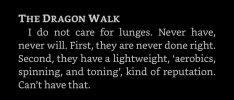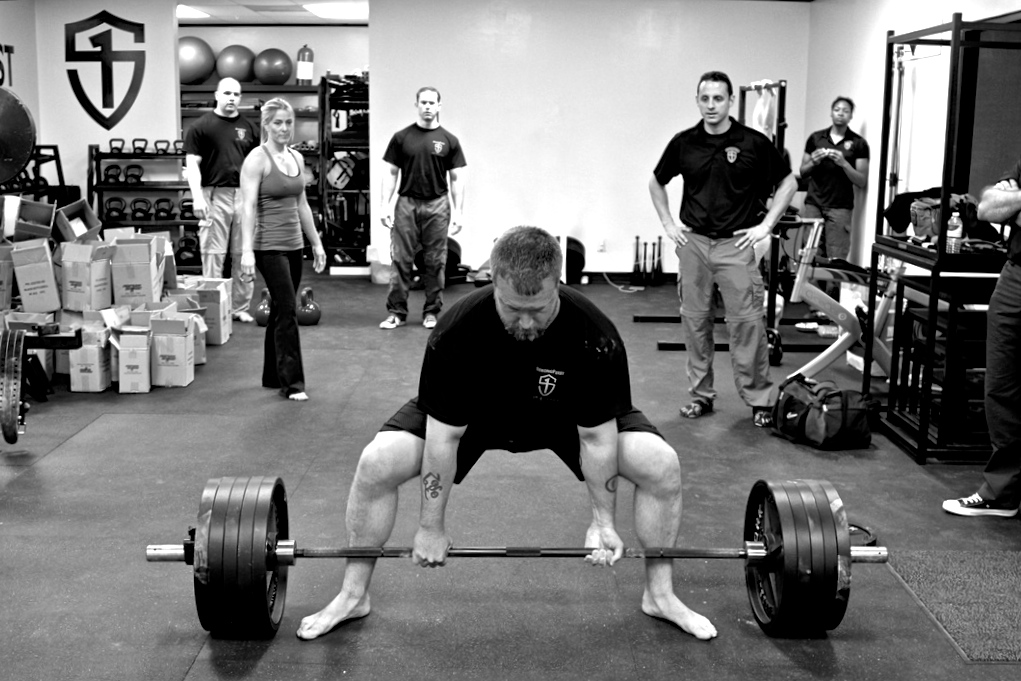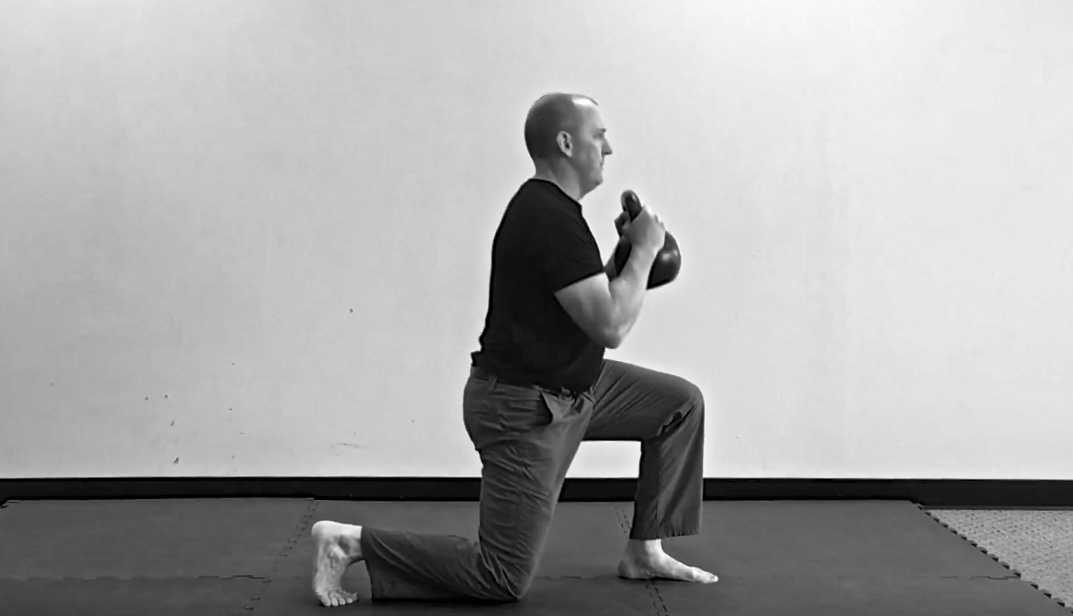I think you're talking about multiple things and when someone disagrees you fall back on a less controversial point.
I'm not really sure what your talking about here? The discussion from my perspective isn't meant to be a serious discussion but a friendly one.
Statement 1:
No. They aren't. You can get everything you can get from lunges from a back squat, but you can't get everything from a lunge that you can get in a back squat. This is why they are not interchangeable, and why lunges are not a "basic major movement pattern that SHOULD (emphasis added) be trained along side squats ..."
So the first statement you address is a statement I made that clarified my original question. My original question itself is not a statement. It's a question.
Where you quote me I wasn't stating the lunge is a major movement pattern (Although at this point I would hold that it is) but posing a question and also asking if single exercises are necessary along side the squat as well as whether or not they are interchangeable, so technically 3 different questions. To clarify as well I often pose questions because I am sort of thinking out loud so I don't always know how to communicate the question I'm thinking about and discussing it helps to clarify that for me. That doesn't mean I am trying to change what I'm saying during the discussion but rather my question becomes more clear for me during the discussion and my opinion also becomes more clear.
As far as them being interchangeable or not, I would agree that you're not going to get everything from lunges that you do from double leg squats, but I would argue that you don't get everything from double leg squats that you do from lunges. The question is do you get enough from squats where squats alone can eliminate the need to directly work squats? I'm not convinced that is fully the case.
I would agree that possibly for the everyday individual you might be able to get enough from squats to not have to directly work lunges however the more active you are I would say the more you would benefit from doing both. I think it has less to do with how strong you are and more to do with how active you are because the more active you are the more the lunge movement pattern is used in your activity. Running, biking, climbing stairs, ladders and hills etc. are all more active movements that are a lunge pattern. The more you do these and the more intensely you do then the more important that pattern becomes a more important pattern to train directly, that is of course if we can conclude it's necessary.
So my conclusion would be at this point it is a basic and major movement pattern. We hinge, squat, and lunge all dat every day. In fact one could argue the less you "need" lunges in life the more likely you are to die younger as it means you are less active and the weaker you are in this movement pattern the less active you be able to be later in life,but that's another discussion.
Statement 2:
Disagree. I don't think they are necessary and I do not think that they will definitely increase your double leg squat strength. This doesn't mean that they aren't useful, and it doesn't mean that SOME people might find carry over. But the stronger you are, the less I think this will have any carry over.
To clarify I didn't say they will alone increase your double leg squat strength. What I said was doing lunges or other single leg variations along side squats once a week, with the single leg days stimulating some of the same muscles, as well as doing heavy hinge exercises and a heavy press, this together would increase your strength in the squat as well as or similar to if you were only doing double leg squats 3 times a week. We could argue that you may not get there as quick but I would say you will get there the same otherwise and maybe in a similar time frame.
So no I did not say that lunges are going to increase your squat strength the same as doing double leg squats.
Now originally I was asking if they are "interchangeable", however that question was in the context of being along side heavy hinge training. I probably should have clarified that and that might be part of where the some confusion is coming from. I guess I just assumed it was a given since most all of Pavel's GPP programs are based on a major pull/ hinge and press.
In other words the question about where they are interchangeable was more can single leg exercises suffice to fully replace squats (to work the pressing or anterior function of thr legs) when done in conjunction with a heavy hinge focused protocol. That doesn't mean you are going to be able to squat as much as you could if you were training double leg squats but is that "necessary" to be able to do so? I think there is a possibility you would have a decent enough squat for it not to matter.
Why is this an important question? Because not everyone has easy access to a squat rack and it's difficult to load squats heavy without one.
Non-controversial Statements:
Great. No argument here. And I'm not even attempting to argue that someone HAS to back squat.
However, while no one NEEDS to train a back squat, but training some form of bilateral squat is probably a good idea, even if it is just for general mobility and the ability to stand up off a toilet or out of a chair unassisted. This is why it IS a basic movement pattern.
Yes and wouldn't single leg exercises suffice for these activities? Also where you would need to strong hips and core working in conjunction with strong legs wouldn't a hea y hinge along side strong legs from single leg work suffice? Or would they? That is the question. I think an argument can be made that single leg work in conjunction with a heavy hinge is more important than the squat itself, though it doesn't mean there isn't a benefit to working all three.
Agreed. No argument here.
Largely agreed there. Folks that want to lift and have have what we can call general goals should do something that trains "legs" and a lunge checks that box. Primarily using the lunge - also fine and dandy. Using lunge as one variation in a weekly template that also includes a bilateral squat - also great. Maybe even better.
No one NEEDS to train a lunge, but it is a useful tool in the toolbox. It is contraindicated for a LARGE number of "every day" people and so I would NOT say EVERYONE needs to do it. A lunge is a fairly unique movement pattern that is not often seen throughout one's normal daily activities and so would not be as important to train, especially if that meant training it in lieu of ANY bilateral squat variation. This is why it is NOT a basic movement pattern. If, for some reason, some one has a lifestyle that necessitates regular daily use of a form of lunge, one could argue that it is then a basic movement pattern for that person.
Again lunges are used in everyday life just as much as a squat and hinge are. I don't see a lunge as less important than a squat. I just question how to make sure both patterns are covered in the most efficient way possible because a minimalist approach is one of my goals. I just don't want to lose our on performance for the sake of minimalist approach.
In conclusion my experience in my training has always been that if I don't do lunges for a while, even when still training squats, when I do them again I can really feel it in my hamstrings which has always made me feel the need to train them directly. In trying to minimize my routine I'm tempted to do away with them but I can't bring myself to do it. I just thought I would lose the question to the forum. I've also wondered if single leg exercises along side a heavy hinge and press protocol would suffice to do away with double leg squats, which I think an argument could be made for this, and Pavel himself even hints at this in PTTP. He argued that you're putting the same body parts under load and they are going to get strong. No it's not the same specific movement pattern so you won't be as strong in the exactly lift but you will be stronger in that lift by default and you will be just as strong because you are recruiting all the muscles to generate maximal force by thr body as a whole and with the whole body under load working together.
With all that said I'm sorry if my questions weren't completely clear at first or if I caused confusion by later taking a more dirn stance (I drew more conclusions through the discussion and thinking about the questions). I also didn't mena any offense in disagreeing with you. There is no real way to convey tone via text and often direct communication can come across as harsh or rude but it can be laboring to have to add fluff to your words to make sure the other person perceived you are being friendly. I hope no offense was caused.




